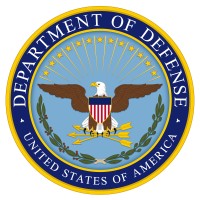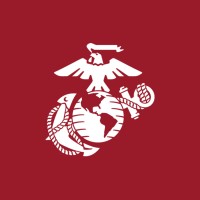
United States Marine Corps Company Cyber Security Posture
marines.milThe United States Marine Corps (USMC) is a branch of the United States Armed Forces responsible for providing power projection, using the mobility of the United States Navy, by Congressional mandate, to deliver rapidly, combined-arms task forces on land, at sea, and in the air. The U.S. Marine Corps is one of the four armed service branches in the U.S. Department of Defense (DoD) and one of the seven uniformed services of the United States.
USMC Company Details
united-states-marine-corps1
76091 employees
236550.0
928
Armed Forces
marines.mil
Scan still pending
UNI_1567886
In-progress
Between 800 and 900
This score is AI-generated and less favored by cyber insurers, who prefer the TPRM score.
 USMC Global Score
USMC Global Score.png)

United States Marine Corps Company Scoring based on AI Models
| Model Name | Date | Description | Current Score Difference | Score |
|---|---|---|---|---|
| AVERAGE-Industry | 03-12-2025 | This score represents the average cybersecurity rating of companies already scanned within the same industry. It provides a benchmark to compare an individual company's security posture against its industry peers. | N/A | Between 800 and 900 |
United States Marine Corps Company Cyber Security News & History
| Entity | Type | Severity | Impact | Seen | Url ID | Details | View |
|---|
United States Marine Corps Company Subsidiaries

The United States Marine Corps (USMC) is a branch of the United States Armed Forces responsible for providing power projection, using the mobility of the United States Navy, by Congressional mandate, to deliver rapidly, combined-arms task forces on land, at sea, and in the air. The U.S. Marine Corps is one of the four armed service branches in the U.S. Department of Defense (DoD) and one of the seven uniformed services of the United States.
Access Data Using Our API

Get company history
.png)
USMC Cyber Security News
Marine Corps releases AI implementation plan
Marine Corps officials unveiled the service's new artificial intelligence implementation plan, laying out timelines for achieving key objectives ...
News - Marine Corps Cyber Operations Group Opens Network/Systems Operations Center
The NOC/SOC Watch Floor is a critical component in securing the Marine Corps Enterprise Network (MCEN) and provides essential cybersecurity and ...
A Stint As A U.S. Marine Helped Chris Conley '26 Reset His Course, Find Success At Keene State
Christopher Conley was 20 years old and a struggling community college student when he encountered a life-changing fork-in-the-road moment.
Operational Security Starts Online | Proceedings - April 2025 Vol. 151/4/1,466
The Marine Corps' poor information-security practices put the force at risk.
US-Paraguay Cybersecurity Review Uncovers China-Linked Hacking Operation
The identified threat comes from “Flax Typhoon,” a hacking group linked to the Chinese government. Active since 2021, the group has targeted ...
Marines banking on identity services as zero trust foundation
The Marine Corps is solving its identity crisis. No, not who or what a Marine is, but identity as it relates to network management and cybersecurity.
How the Marine Corps uses IT to defeat evolving threats
Each year, Marine Corps Systems Command acquires a range of ground-based innovations designed to meet the warfighter's needs.
Defense Sector Review with Mercury Strategic: Cybersecurity Challenges and Innovations
The Georgian and Ukrainian Armed Forces have both encountered difficulties related to training, coordination, and the integration of cyber defense into broader ...
Commander, CNMF
Major General Lorna Mahlock assumed her current duties as Commander, Cyber National Mission Force in January 2024.Prior to her current assignment, ...

USMC Similar Companies

Ministerie van Defensie
Het Ministerie van Defensie bestaat uit de Koninklijke Marine, de Koninklijke Landmacht, de Koninklijke Luchtmacht, de Koninklijke Marechaussee, het Commando DienstenCentra en de Defensie Materieel Organisatie. Aan het hoofd van de Bestuursstaf (het departement) staat de minister van Defensie. We

Belgian Defence
Defence currently has a thousand soldiers deployed around the world on average, generally in coordination with other international partners. After all, we not only carry out peace-making and keeping operations or humanitarian efforts. Our soldiers are professional bridge-builders who intervene in co

United States Department of Defense
The mission of the Department of Defense is to provide military forces necessary to protect the security of our country. The U.S. military defends the homeland, deters adversaries, and builds security around the world by projecting U.S. influence and working with allies and partners. In case deterre

Marine Corps Recruiting
This is the Official LinkedIn Page of Marine Corps Recruiting. We make Marines. We win our nation's battles. We develop quality citizens. These are the promises the Marine Corps makes to our nation and to our Marines. The core values that guide us, and the leadership skills that enable us, not on

U.S. Coast Guard
The mission of the U.S. Coast Guard is to protect the public, the environment, and U.S. economic interests — along the coast and our coastal borders, in the nation's ports and waterways, in international waters, or in any maritime region as required to support national security. As one of the six b

Swedish Armed Forces
The Swedish Armed Forces is one of the biggest authorities in Sweden and is headed by a Supreme Commander. The deputy leader of the authority is the Director General. As the only authority permitted to engage in armed combat, the Swedish Armed Forces are Sweden’s ultimate security policy resource

Frequently Asked Questions
Explore insights on cybersecurity incidents, risk posture, and Rankiteo's assessments.
USMC CyberSecurity History Information
How many cyber incidents has USMC faced?
Total Incidents: According to Rankiteo, USMC has faced 0 incidents in the past.
What types of cybersecurity incidents have occurred at USMC?
Incident Types: The types of cybersecurity incidents that have occurred include .
Incident Details
What are the most common types of attacks the company has faced?
Additional Questions
What Do We Measure?
















Every week, Rankiteo analyzes billions of signals to give organizations a sharper, faster view of emerging risks. With deeper, more actionable intelligence at their fingertips, security teams can outpace threat actors, respond instantly to Zero-Day attacks, and dramatically shrink their risk exposure window.
These are some of the factors we use to calculate the overall score:
Identify exposed access points, detect misconfigured SSL certificates, and uncover vulnerabilities across the network infrastructure.
Gain visibility into the software components used within an organization to detect vulnerabilities, manage risk, and ensure supply chain security.
Monitor and manage all IT assets and their configurations to ensure accurate, real-time visibility across the company's technology environment.
Leverage real-time insights on active threats, malware campaigns, and emerging vulnerabilities to proactively defend against evolving cyberattacks.




